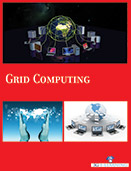Computer Science

Today we are living in the Internet age and everyone prefers to enjoy fast access to the Internet. But because of multiple downloading, there is a chance that the system hangs up or slows down the performance that leads to the restarting of the whole process from the beginning. Grid computing architecture is a collaborative, network-based model that enables the sharing of computing resources: data, applications, storage and computing cycles. Distributed computing serves as the core of grid computing. Using IP-based networks, a grid links hundreds or thousands of servers and desktop computers into a supercomputing engine capable of delivering massive amounts of computational power and other IT resources. Grids generate a distributed network of computers that share resources over a various set of systems, pooling resources so that many computers can share work and conveniently access remote resources. There is an urgent need for grid computing in drug design, geophysical prospecting, and mechanical engineering.